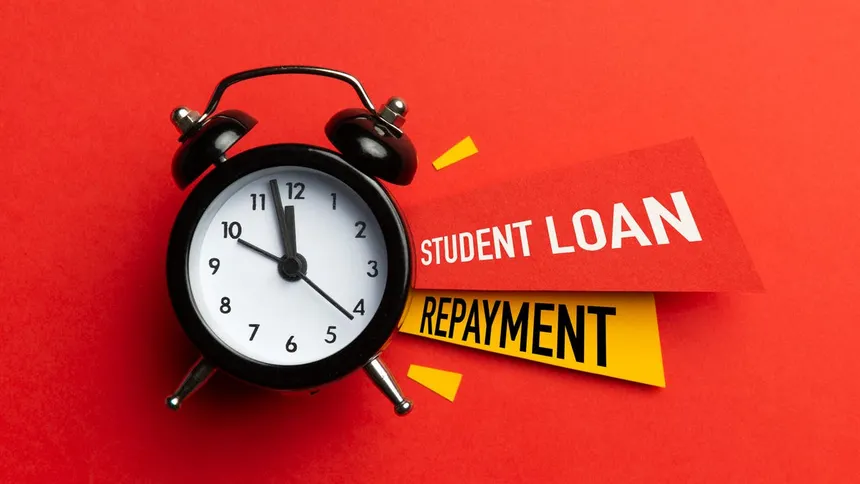The End of a Historic Student Loan Pause
After more than three years, the federal student loan repayment pause has officially ended, impacting millions of borrowers across the United States. Originally implemented in March 2020 as a response to the COVID-19 pandemic, this pause provided financial relief to borrowers by halting payments, freezing interest rates, and suspending collections on defaulted loans.
As payments resume, many borrowers now face financial strain, confusion about repayment options, and concerns about their budgets. Here’s everything you need to know about the repayment restart, key deadlines, available relief programs, and expert advice on managing student debt.

1. Why Did the Student Loan Pause End?
The federal government initially introduced the repayment pause as part of the CARES Act, with extensions granted by both the Trump and Biden administrations. However, recent legislation and economic factors have led to the official conclusion of this relief measure.
- Congress Blocks Further Extensions: The Biden administration sought additional extensions and forgiveness programs, but Congress passed the Fiscal Responsibility Act of 2023, preventing further delays.
- Economic Recovery Signals: The government believes that the economy has improved enough for borrowers to resume payments.
- Supreme Court Ruling: The Supreme Court struck down President Biden’s student loan forgiveness plan, limiting relief options for borrowers.
2. When Do Payments Resume?
Understanding the repayment timeline is crucial for borrowers to avoid late fees and potential credit score damage.
- Interest Accrual Restarted on September 1, 2023: Even if borrowers hadn’t started payments, interest began accumulating again.
- First Payments Due in October 2023: The exact due date depends on individual loan servicers, so borrowers should check their accounts for specific deadlines.
- No Immediate Defaults Due to On-Ramp Period: From October 2023 to September 2024, late or missed payments won’t immediately impact credit scores, providing a temporary safety net for borrowers adjusting to payments.

3. What Are the Repayment Options for Borrowers?
With payments resuming, borrowers have multiple repayment options available based on their financial situations.
A. Standard and Income-Driven Repayment (IDR) Plans
- Standard Repayment Plan: Fixed payments over 10 years, ideal for those who can afford higher monthly amounts.
- Income-Driven Repayment (IDR) Plans: Monthly payments are adjusted based on income and family size, providing lower payment options for those with financial difficulties.
B. SAVE Plan (New IDR Program)
- The Saving on a Valuable Education (SAVE) Plan is a newly introduced income-driven repayment plan that reduces payments for low-income borrowers and offers potential loan forgiveness after 10-25 years of payments.
- Key benefits include:
- Payments as low as $0 for low-income borrowers.
- Interest subsidies preventing unpaid interest from accumulating.
- Partial forgiveness for certain borrowers after 10 years.

C. Deferment and Forbearance Options
- Borrowers experiencing financial hardship may qualify for deferment or forbearance, temporarily pausing payments.
- However, interest may still accrue during these periods, increasing total repayment costs.
4. How to Prepare for Loan Repayment?
To ease the transition back into repayment, borrowers should take proactive steps now.
- Check Your Loan Servicer: Some servicers have changed, and borrowers should confirm their loan provider on Studentaid.gov.
- Update Contact Information: Ensure that the loan servicer has the correct email, phone number, and mailing address to receive important updates.
- Review Your Payment Plan: Determine if switching to an IDR plan or SAVE plan can lower monthly payments.
- Set Up Auto-Pay: Many servicers offer an interest rate reduction for borrowers enrolled in auto-payment programs.
- Budget for Payments: Adjust monthly budgets to accommodate the added expense of student loan repayments.
- Consider Loan Consolidation: Borrowers with multiple loans may simplify payments through consolidation.

5. What If You Can’t Afford Your Payments?
Many borrowers struggle with financial challenges, making it difficult to resume loan payments. Here’s what to do:
- Apply for an Income-Driven Repayment (IDR) Plan: These plans base payments on income, reducing financial strain.
- Utilize the On-Ramp Program: Until September 2024, missed payments won’t be reported to credit bureaus, but interest still accrues.
- Seek Employer Assistance: Some employers offer student loan repayment benefits; check with HR departments.
- Look Into Loan Forgiveness Programs: Borrowers in public service or non-profit jobs may qualify for Public Service Loan Forgiveness (PSLF).
6. Common Questions About the Loan Repayment Restart
Q: Will interest rates be the same as before the pause?
A: No, interest rates have been adjusted based on inflation and federal decisions. Borrowers should check their updated rates.
Q: What happens if I miss a payment?
A: During the on-ramp period (October 2023 – September 2024), missed payments won’t impact credit scores, but interest continues accruing.
Q: Can I still apply for loan forgiveness?
A: Yes, PSLF and other forgiveness programs remain available, though Biden’s broader forgiveness plan was blocked by the Supreme Court.
7. Final Thoughts: How to Stay Ahead of Loan Repayments
The end of the student loan pause marks a significant financial shift for millions of Americans. While challenges exist, taking proactive steps like reviewing repayment options, setting up automatic payments, and exploring loan forgiveness programs can help borrowers manage their debt effectively.
As payments resume, staying informed and planning strategically will be crucial for maintaining financial stability.
Key Takeaways:
✔️ Payments officially resumed in October 2023.
✔️ Interest started accruing again on September 1, 2023.
✔️ New SAVE plan offers lower payments for eligible borrowers.
✔️ The on-ramp period (Oct 2023 – Sept 2024) prevents immediate penalties for late payments.
✔️ Loan forgiveness programs remain available for eligible borrowers.
By understanding available resources and taking action early, borrowers can ease the transition back into repayment and minimize financial stress.
U.S. Sets New Record: Solar and Wind Energy Surge to Historic Highs in 2024






